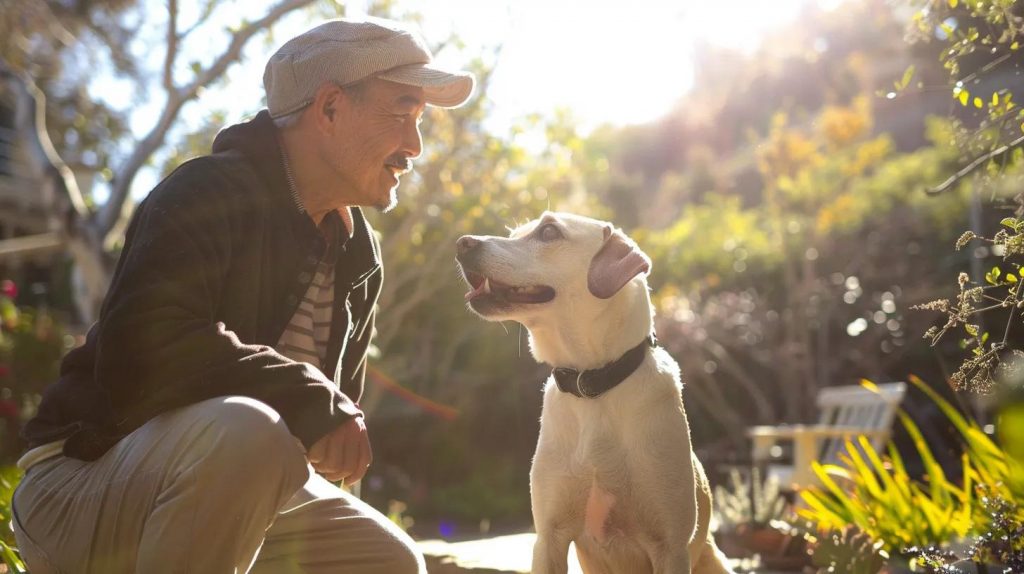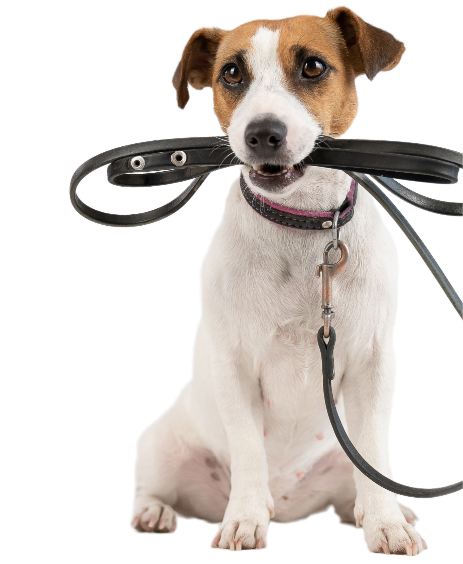
Topanga vs. Traditional Dog Training: Discover the Best Path to a Well-Behaved Companion with a Los Angeles Dog Trainer
Selecting the right approach to dog obedience training can truly transform your dog’s behavior and deepen your connection. Dog parents often find themselves navigating the differences between older, correction-based methods and modern, positive techniques. The best choice, however, comes down to what truly works, what’s kind, and what creates lasting, happy results. In this guide, we’ll explore the distinctions between conventional dog training and the philosophy at Topanga Pet Resort, highlight key differences, help you make an informed decision, answer your burning questions, delve into specialized behavior programs, and show you why Topanga Pet Resort’s expertise in Los Angeles and Ventura Counties delivers exceptional outcomes in dog obedience training.
What Exactly Are Traditional Dog Training Methods?
Traditional dog training often relies on corrections and compulsion to curb unwanted behaviors. This approach prioritizes immediate obedience through physical or verbal reprimands, aiming for quick results, sometimes at the expense of a dog’s emotional comfort.
What Tools and Techniques Are Common in Traditional Dog Training?
Traditional methods frequently involve a range of tools designed to apply pressure or discomfort to achieve control:
- Choke Chains: Used to create brief pressure on the neck to interrupt pulling or jumping.
- Prong Collars: Apply pinching pressure around the neck to discourage unwanted actions.
- E-Collars (Electronic Collars): Deliver static stimulation for off-leash control.
- Alpha Rolls and Dominance Exercises: Force a dog into a submissive position to establish a perceived “pack order.”
These tools tend to focus on stopping behavior instantly rather than motivating through positive reinforcement, which can lead to quick obedience but may also create trust issues down the line.
Use of Behaviour-Modifying Collars on Dogs
What Are the Upsides and Downsides of Traditional Training?
Traditional dog training can offer:
- Quick Behavior Interruption – Corrections can halt unwanted actions almost immediately.
- Clear Structure – Dogs can learn a set of rules quite rapidly.
However, these methods can also lead to:
- Fear and Anxiety – Aversive corrections can trigger stress and worry in dogs.
- Damaged Trust – Dogs might start to associate their handlers with discomfort rather than guidance.
- Temporary Fixes – Behaviors that are suppressed may reappear once the corrections stop.
Does Training Method Matter? Evidence for the Negative Impact of Aversive-Based Methods on Companion Dog Welfare
Finding the right balance between speed and a dog’s well-being is a key challenge with correction-focused programs.
How Does Balanced Dog Training Fit In?
Balanced dog training aims to achieve obedience by incorporating both rewards and corrections. It blends positive reinforcement with the occasional use of aversive tools, intending to maintain control while also using treats or praise. For instance, a trainer might use a prong collar to stop pulling, then reward the dog for walking nicely. While this mixed approach can lead to reliable obedience, it still carries the risk of mixed messages and stress when corrections overshadow rewards, often prompting owners to seek purely force-free solutions next.
What Is the Topanga Pet Resort Los Angeles Dog Trainer Philosophy?

At Topanga Pet Resort, we embrace a relationship-focused training philosophy built on positive reinforcement. This modern approach centers on rewarding behaviors we want to see, fostering trust, confidence, and consistent obedience without any need for physical corrections.
What Are the Core Principles of Topanga’s Positive Reinforcement Training?
- Force-Free Techniques – We never use tools that cause pain or fear.
- Reward-Based Motivation – Desired actions are met with treats, toys, or enthusiastic praise.
- Trust-Building Exercises – Our activities are designed to cultivate a strong, cooperative partnership.
- Understanding Canine Behavior – Our trainers are skilled at interpreting body language and identifying triggers.
- Customized Plans – We tailor programs to each dog’s unique learning style and pace.
By focusing on encouragement and positive experiences, this method enhances a dog’s eagerness to learn and builds obedience that lasts.
How Does Topanga Tailor Training for Different Dog Behaviors?
- Basic Obedience – We build essential cues like sit, stay, and recall.
- Aggression Management – We identify triggers and then gently reshape responses through gradual desensitization and positive associations.
- Protection Training – We channel protective instincts into controlled, appropriate tasks using structured reward systems.
This personalized approach ensures every dog progresses with confidence, addressing the root causes of unwanted behaviors and establishing a solid foundation for reliable obedience.
What Are the Benefits for Dogs and Their Owners with Topanga’s Approach?
- Stronger Human-Animal Bonds – Positive interactions build mutual respect and understanding.
- Reduced Stress Levels – Dogs learn joyfully, free from fear.
- Lasting Behavior Change – Habits learned through positive reinforcement stick.
- Enhanced Socialization – Confident dogs interact more positively with people and other animals.
Learning through rewards cultivates happy, well-adjusted companions who are eager to please.
Topanga vs. Traditional Dog Training: A Direct Comparison
When you compare traditional methods with the Topanga philosophy, you’ll see clear differences in the tools used, the motivation behind the training, and the ultimate outcomes.
What Are the Differences in Tools, Motivation, and Ethical Considerations?
| Training Aspect | Traditional Methods | Topanga Pet Resort Approach |
|---|---|---|
| Tools | Choke chains, prong collars, e-collars | Clickers, treats, toys |
| Motivation | Avoiding discomfort | Earning rewards and praise |
| Ethical Framework | Compliance through correction | Cooperation through encouragement |
Which Method Is More Effective for Behaviors Like Aggression or Fear?
For aggression, some methods might quickly stop reactive responses, but they risk the behavior returning if the underlying fear isn’t addressed. Topanga’s behavior modification uses gradual desensitization, counter-conditioning, and positive associations to safely reframe aggressive or anxious dogs, leading to more consistent, confident behavior over time.
What Are the Long-Term Results of Each Training Philosophy?
Traditional training can result in obedient dogs when under direct supervision, but underlying anxiety might affect their reliability in different situations. In contrast, Topanga’s positive reinforcement cultivates dogs who willingly comply in various environments, promoting lasting obedience and a harmonious owner-dog relationship that grows stronger naturally.
How Can Dog Owners Choose the Right Training Method for Their Dog?
What Factors Should Guide Your Choice of Dog Training Method?
- Dog’s Temperament – Sensitive dogs thrive with gentle reinforcement, while more independent dogs benefit from engaging rewards.
- Behavioral Issues – Aggression and fear require specialized behavior modification techniques.
- Owner’s Goals – Consider whether you’re aiming for basic manners, advanced skills, or behavior rehabilitation.
- Trainer Credentials – Certified professionals adhere to ethical standards and proven methods.
Why Is Choosing a Certified Dog Trainer So Important?
Certified trainers demonstrate a deep understanding of canine learning, uphold ethical practices, and are committed to continuous learning. Their credentials assure you of their reliability and protect your dog from unqualified or potentially harmful techniques, giving you peace of mind throughout the training journey.
How Does Topanga Pet Resort Serve Dog Owners in Los Angeles and Ventura Counties?
Topanga Pet Resort offers comprehensive dog obedience training, boarding, and daycare services throughout Southern California. From in-depth behavior assessments to customized training plans, our skilled trainers provide professional, force-free programs designed specifically for local dogs and their families. Discover more about our expert services at Topanga Pet Resort – Dog Boarding, Training, Daycare.
Frequently Asked Questions About Positive Reinforcement vs. Traditional Training
What's the Difference Between Traditional and Modern Dog Training?
Traditional dog training uses corrections to stop unwanted behavior, while modern positive reinforcement training rewards desired actions to build trust and lasting obedience.
Is Positive Reinforcement Dog Training Effective?
Absolutely! Positive reinforcement training is highly effective for improving obedience. It leverages dopamine-driven learning, leading to significant reductions in problem behaviors and fostering stronger owner-pet bonds, as supported by industry studies.
What Are the Downsides of Traditional Dog Training?
Traditional training can unfortunately lead to fear, stress, and a breakdown of trust due to the use of aversive tools and corrections. This can sometimes result in aggression or anxiety that resurfaces when the punishments are removed.
The Effects of Using Aversive Training Methods in Dogs – A Review
Which Dog Training Method Is Best for Puppies?
Positive reinforcement is the ideal choice for puppies. This reward-based approach encourages exploration, socialization, and early bond formation without instilling fear or confusion in young, developing dogs.
How Does Topanga Pet Resort’s Training Approach Address Aggressive and Fearful Behaviors?
Topanga’s specialized behavior modification programs utilize science-based techniques combined with compassionate reward systems to safely and effectively help dogs with challenging behaviors.
What Techniques Does Topanga Use for Aggressive Dog Training?
Topanga employs gradual desensitization paired with counter-conditioning. We identify triggers and help dogs replace reactive responses with alternative, positive actions, reinforced through clicker training and high-value treats.
How Does Positive Reinforcement Help Manage Fear and Anxiety in Dogs?
By creating positive associations with things that were once scary, this method builds confidence through small, manageable steps, trust-building exercises, and consistent rewards that gently reshape a dog’s emotional responses.
Are There Case Studies Showing Success with Topanga’s Methods?
Certainly! In one anonymized case, a dog named “Buddy” overcame significant leash reactivity within eight weeks of joint handler-trainer sessions. Through reward-based confidence building and graduated exposure, Buddy transformed from being panicked by the sight of other dogs to calmly walking on leash.
Why Choose Topanga Pet Resort Over Traditional Training Options?
Choosing Topanga Pet Resort means opting for training that is both ethical and effective, strengthening your bond with your dog while prioritizing their overall well-being.
How Does Topanga Ensure a Nurturing and Safe Training Environment?
Our trainers create low-stress settings, exclusively use force-free tools, closely monitor canine body language, and adjust session intensity to ensure dogs remain comfortable and engaged throughout their learning experience.
What Specialized Training Programs Does Topanga Offer?
- Family Dog Training Program – Family Dog Training
- Protection Dog Training – Protection Dog Training
- Aggressive Dog Training – Aggressive Dog Training
How Can You Book a Consultation or Training Program at Topanga Pet Resort?
To arrange a personalized training plan, simply visit the Topanga Pet Resort website, fill out our online inquiry form, or give us a call directly to schedule an in-person assessment and discuss a customized program proposal.
Experience truly transformative obedience training, built on positive reinforcement and expert care, by booking a consultation with Topanga Pet Resort today.



